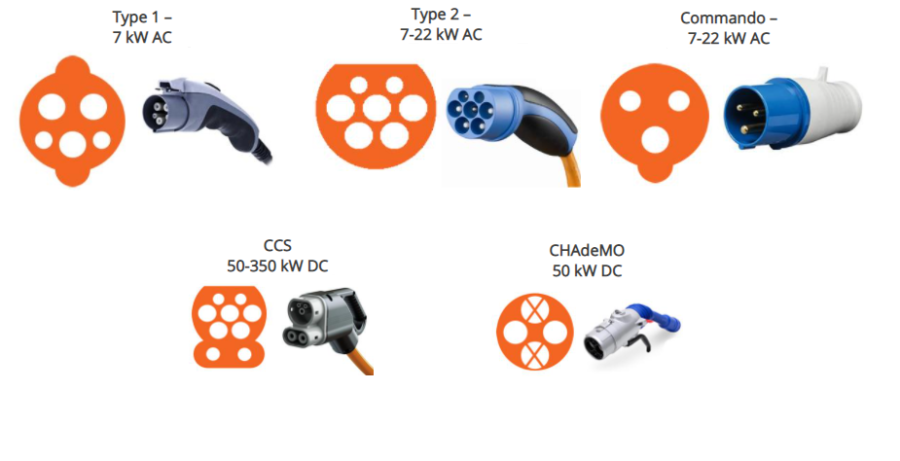As you may (or may not) know, there are now quite a few different ways to charge an electric vehicle (EV); from using a traditional three-pin plug and socket in your home, installing a specific charging box outside your house, to public charging points throughout the UK.
Whilst all petrol and diesel vehicles can be fuelled at any forecourt pump, electric and hybrid vehicles have a variety of plugs and connectors.
So, what are the different types? We’ll give you a very short guided tour and hopefully allay any concerns that you might have……
Type 1
This is a single phased plug with a max charge of 7.4Kw. Some UK vehicles have a Type 1 connector, however these are mainly found on mainland Europe. Some home and public chargers use Type 1, but there are no public charging facilities that only serve Type 1 cables/connectors. If however if you have a Type 2 cable, you should be able to charge anywhere.
Type 2
In 2014, the European Commission ruled that all public charging stations across the continent must feature a Type 2 connector or connecting capability. This is why new electric vehicles and plug in vehicles sold in the UK feature type 2 sockets. Most of these vehicles often come with a Type 2 cable included and most home chargers available in the UK also feature a Type 2 connector.
Commando
This is one of the least common/popular options; perhaps something to do with it being more frequently found on low-selling electric vehicles. Some pubic charging stations do feature this connector, but they are rare.
CCS
CCS stands for Combined Charging System; this is a rapid DC charging connector, favoured by European manufacturers. It’s available at any public charging station with a charging capacity of 50kW. If you want to use one, your car must have a CSS socket.
CHAdeMO
This is the Japanese counterpart of CCS. It also works on 50kW power and cars need a specific socket to use public chargers. But all stations with CCS also have CHAdeMO.
Like us, you may like pictures to go with your words, so here are some images of the chargers we’ve detailed.
